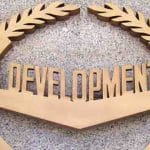Karachi, Jan 4 (Online): In the latest episode of the SBP Podcast series, three officers of Economic Policy Review Department (EPRD) discuss the prospects of demographic dividend in Pakistan. The population of Pakistan has increased exponentially from 1970 when it was 59 million to 231 million in 2021. The majority of population in Pakistan comprises of youth; individuals below the age of 30. The age distribution of the country’s population holds the potential to provide a demographic window; a period of time during which the working-age population outnumbers the population of dependents. In turn that can lead to a demographic dividend; a period of accelerated economic growth which is fueled by a favorable age structure.
Research shows that demographic dividend has a positive impact on economic growth. For instance, East Asia achieved an accelerated economic growth from 1965 to 1990 and it has been estimated that one-third of this growth was achieved due to demographic dividend and the rest was due to favorable economic policies.
There are two channels to achieve economic growth through demographic dividend; first is macroeconomic channel which is fueled by an increase in youth population which means that labor force participation is increased.
It includes higher participation of women in the workforce.
As a consequence, the pressure on government resources is reduced as the number of dependents decreases. This allows the government to divert resources to more productive aspects. Second, economic growth can be achieved by human development channel wherein young individuals are trained and they contribute to economic development.
It is of paramount importance to note that only a favorable age structure alone does not yield demographic dividend. To harness it, the right policy mix is needed, including investments in education and healthcare to improve human capital and productivity. Unfortunately, Pakistan has lagged compared to regional peers in terms of access to education and the literacy rate is the lowest among the region.
Gender disparity in education enrollment poses a risk to prosperity and economic growth. Similarly, nutrition and healthcare are preconditions to realize the benefits of demographic dividend. It has been estimated that in 2033, around 48 million people from the working age population will have suffered from stunted development due to inadequate nutrition. The productivity of these people may be compromised throughout their working lives.
These factors pose hurdles to the attainment of demographic dividend in Pakistan. Along with these, it is important to address low economic growth as we need an estimated economic growth of 6 – 7 percent to absorb the growing population. There is also a need to incentivize savings and encourage new businesses and investments.
Follow the PNI Facebook page for the latest news and updates.








